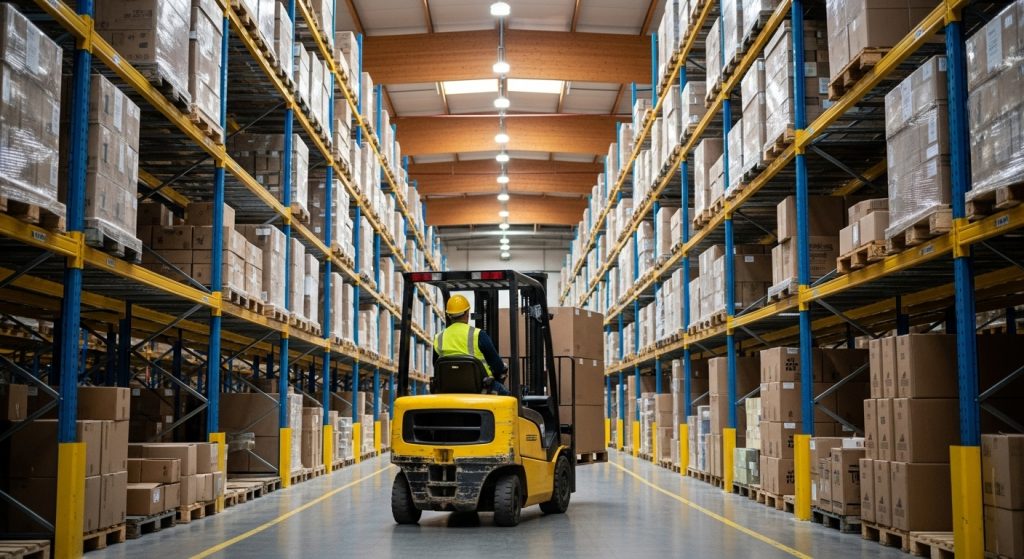In our years of experience within the warehousing and logistics industry, we at 8Stock understand that safety is not just a compliance requirement—it’s a critical component of effective operations. Every year, countless workers are injured in warehouse settings due to avoidable accidents, underscoring the importance of rigorous safety protocols.
Your commitment to warehouse safety can foster a healthier, more productive work environment, ultimately boosting morale and efficiency. Below, we share five essential tips that align with our expertise, empowering you to safeguard your team effectively.
Why Warehouse Safety is Crucial
Warehouse safety isn’t merely about adhering to legal requirements; DOSH Malaysia it significantly impacts employee well-being, productivity, and overall operational success. Poor safety practices can lead to costly injuries, reduced staff morale, and even legal issues. Hence, creating and maintaining stringent safety measures can ensure your workforce remains protected, engaged, and efficient.
Our insights into warehouse safety emphasize both the importance of compliance with regulations and the practical application of safety protocols tailored to your operational needs. Let’s explore specific tips that can transform your facility’s safety framework.
1. Prioritize Safety in Material Handling
Material handling is a key aspect of warehouse operations, often involving heavy machinery such as forklifts or electric pallet trucks. To prevent accidents that could lead to injuries or fatalities, it’s imperative that you implement robust training programs for all personnel operating such vehicles.
Here are critical measures to take:
- Conduct Comprehensive Training: Ensure that every operator receives hands-on training prior to engaging with any moving vehicle. This includes understanding speed limits, weight capacities, and established routes.
- Implement Effective Warehouse Layouts: Consider establishing one-way routes wherever possible to minimize the risk of collisions. If reversing is necessary, have dedicated spotters assist drivers.
- Maintain Clear Pathways: Regularly inspect and maintain clear aisles to prevent accidents. This includes immediate disposal of materials and addressing any flooring issues that could pose risks.
- Perform Routine Equipment Servicing: Schedule regular maintenance checks on your material handling equipment to ensure it operates safely and efficiently.
By employing these strategies, you not only comply with safety regulations but also significantly reduce the risk of operational disruptions and injuries.

2. Implement Effective Slip and Fall Prevention
Slips, trips, and falls rank among the most prevalent hazards in warehouses. By prioritizing cleanliness and responsible housekeeping, you can dramatically reduce these incidents.
Here are actionable steps to prevent slip and fall accidents:
- Maintain a Clean Workspace: Immediate cleanup of spills and clutter is essential. Ensure that there are no cables or impediments in walkways.
- Use Anti-slip Solutions: Invest in anti-slip shoes for your staff and apply anti-slip tape on floors, particularly in areas prone to moisture or spills.
- Monitor Floor Conditions: Regularly check for uneven surfaces and make necessary repairs to prevent trip hazards.
Good housekeeping practices combined with proactive measures can create a safe environment for your workers.
3. Promote Manual Material Handling Safety
Despite all the mechanical handling equipment available, there are times when staff must manually lift items. To minimize the risk of musculoskeletal injuries, it’s vital to implement safe lifting practices.
Here’s how to equip your workers for safe manual handling:
- Educate on Ergonomic Techniques: Provide training on lifting techniques that emphasize proper posture and weight distribution, thus raising awareness of safe lifting practices.
- Utilize Grit Tape: Place grit tape in areas where lifting occurs, helping to maintain traction and providing a safer footing.
- Limit Manual Lifting: Encourage use of mechanical aids whenever possible, emphasizing the importance of avoiding manual handling unless absolutely necessary.
By educating your team on safe lifting and ergonomics, you can significantly lower the incidence of injury from manual handling tasks.

4. Establish a Robust Fire Safety Protocol
Fire hazards can quickly escalate in warehouses, especially in areas housing charging stations and flammable materials. A proactive approach to fire safety includes not only compliance with legal standards but also vigorous training and preparedness.
Implement these fire safety measures:
- Conduct Regular Fire Drills: Annual fire drills are essential. They allow employees to familiarize themselves with evacuation routes and protocol, ensuring readiness in case of an emergency.
- Monitor Fire Safety Equipment: Regularly check fire alarms, smoke detectors, and extinguishers to ensure they are functional and accessible.
- Designate a Fire Warden: Appoint a trained individual who can oversee fire safety procedures, coordinate drills, and lead emergency responses.
- Handle Hazardous Materials with Care: Ensure that all chemicals are managed according to regulatory guidelines, maintaining safety throughout the warehouse.
By adhering to these fire safety recommendations, you can mitigate risks and safeguard your workforce.

5. Ensure Pallet and Racking Safety
With a significant portion of warehouse operations revolving around the efficient handling and storage of materials, pallet and racking safety must not be overlooked. Proper training and adherence to stacking principles will ensure stability and prevent accidents.
Here are vital tips for ensuring racking and pallet safety:
- Train on Safe Stacking Practices: Ensure that workers are trained on safe stacking techniques, including consideration of weight limits and height restrictions.
- Use Wrapping Methods: Employ stretch wrapping techniques to stabilize palletized products, improving overall safety and efficiency.
- Conduct Regular Inspections: Routinely assess pallets and racks for damage, ensuring that any issues such as splinters or loose nails are addressed immediately.
- Set Clear Guidelines: Encourage workers to never lean on, climb, or walk over pallets, establishing a culture of safety-conscious behavior.
By maintaining a rigorous focus on pallet and racking safety, you can prevent accidents that could disrupt operations and affect your workforce’s well-being.
The Bottom Line: Safety is Non-Negotiable
As you reflect on the importance of warehouse safety, remember that a consistent focus on safety protocols not only complies with regulations but also enhances morale, productivity, and operational efficiency. By implementing these Warehouse Safety Tips for Every Facility, you can create an environment where your workers feel secure and valued.
Don’t forget that safety is an ongoing process requiring persistent evaluation and update. We’re here to guide you through best practices and help you establish a culture of safety within your operation.
For further insights into managing warehouse operations effectively, consider exploring our resources on safety management and operational efficiency. Reach out to us for tailored guidance or to discuss our Warehouse Management System, which enhances not only safety but overall operational performance.
Contact us now for a free consultation on handling equipment and implementing safety measures tailored to your specific warehouse needs!

